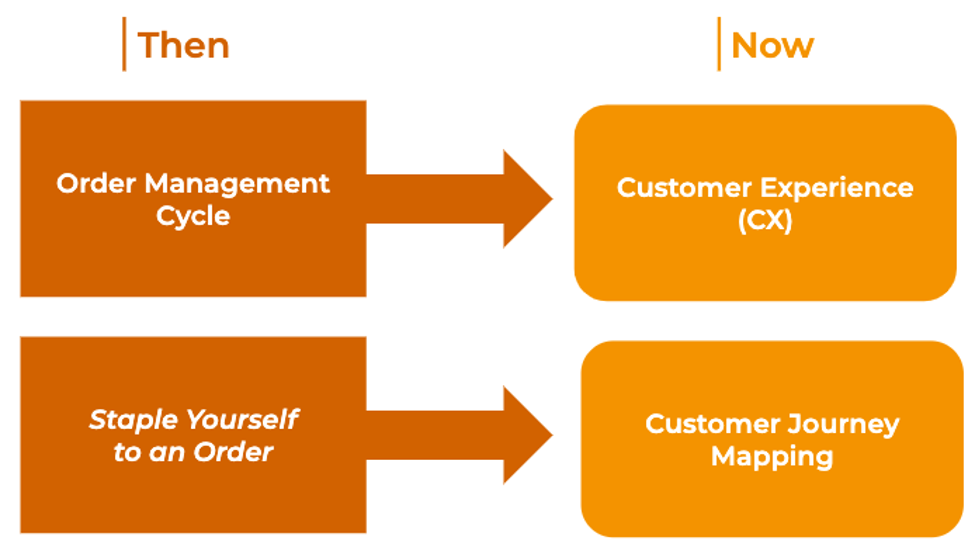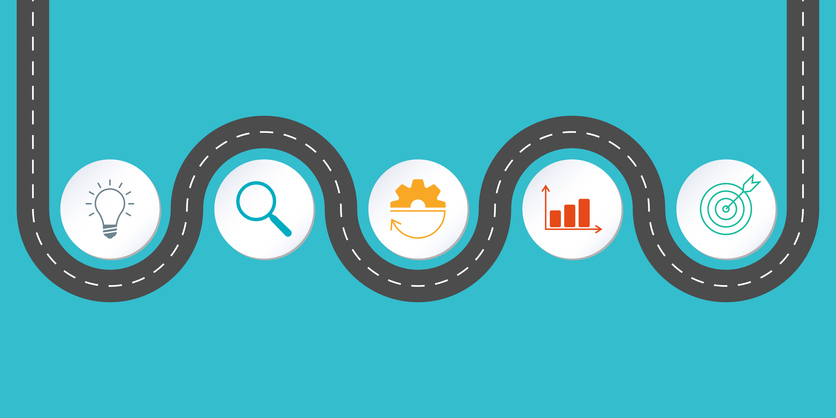How to Optimize a New Customer’s Experience with Customer Journey Mapping
One of our favorite business moments is celebrating a sale to a new customer. We suspect each of us has our own traditional celebration. Whatever that custom is, it’s important to do, in that each new customer acquisition is further proof of the market fit that each of our businesses strives to achieve.
But then what? Once the initial sale has happened, the hard work begins of making your company a must-have, joined-at-the-hip partner to your new customer. While celebrating the successful acquisition of a new customer is important, it’s also important to humbly acknowledge that your new customer is only at the beginning of their journey, and that there are many opportunities still to come to delight or fail the customer.
To put new customers in the best position to stay with you and grow over time, it’s important to focus on optimizing their year-one customer experience. Here are some reasons why:
It’s five to seven times more expensive to acquire a new customer than it is to retain an existing customer.
An increase in your customer lifetime value (CLV) directly leads to an increase in profitability.
On average, loyal customers are worth up to 10 times as much as their first purchase, according to the White House Office of Consumer Affairs.
Not that long ago, this focus on a customer’s experience and journey barely existed. To give you a sense of how far customer experience has evolved, let’s start by traveling back in time 27 years.
Customer Experience Then, and Now
1992 was the year of the Dream Team’s romp through the Barcelona Summer Olympics, the Space Shuttle Endeavor, the start of Bill Clinton’s initial term as President, and the second of four consecutive Super Bowl losses by the star-crossed Buffalo Bills.
Also in 1992, but little heralded at the time, three Harvard Business School professors published an article in Harvard Business Review, memorably titled “Staple Yourself to an Order.” It argued for the merits of tracking the movement of an order throughout a company to make sure a customer isn’t excessively annoyed by the order management process–annoyance being a direct, relevant threat to future growth with a customer. The authors’ plea: View that order from the customer’s perspective.
The article anticipated a lot of what we know and believe today about customer experience. It’s still a good read with prescient insights.
That said, we have come a long way in our thinking about customer experience. For example, at the time, the authors and Harvard Business Review categorized the article as “operations management.” There was no such thing as “customer success” or “business outcomes” in our professional lexicon 27 years ago.
Another example of how our thinking about customer experience has evolved: A graphic from the article illustrates how the authors focused on the initial order processing.There’s barely a mention–limited to steps nine and 10–of any year-one customer activities beyond the initial billing moment. We’d argue that, today, the first eight steps combined are less relevant than the final two steps.
Fast-Forward to 2020
Today’s best performing companies build teams, establish metrics and KPIs, and constantly reassess and improve their customers’ post-sale experience.
In year one, it’s paramount to deliver on your promise to a new customer. A strong first year often leads to customer stickiness and account expansion. That’s why it’s critical to map your customer journey and determine where in year one your company could be better at delivering for a new customer.
To summarize, today’s equivalents to what the HBR authors described in 1992 are as follows:

The Importance of Customer Journey Mapping
Customer journey mapping represents a holistic approach to understanding the customer experience. The primary benefit: You’re able to identify pain points and unmet needs in an actionable way, as you’re pinpointing important moments to address.
Customer Journey Mapping won’t solve the pain points of your customers, but it will identify unmet needs and bring the customer experience to life–and in a context that a PowerPoint presentation cannot.
A picture’s worth a thousand words. Here’s a completed customer journey map. It represents a transactional consumer moment: a taxi ride during a Chicago winter.
It’s comprised of four different sections:
Need help mapping your customer journey?
LEARN HOW CAREMA CONSULTING CAN HELP.
Assumptive Mapping
When you create a customer journey map based on what you know about your customers, you’ve conducted “assumptive mapping.” The steps of this process include:
- Assemble four to six customer-facing people from your company.
Using a customer journey mapping template, fill it out based on what you know about your customers.
Always keep in mind: There are a lot of pressures and anxieties your customers are going through that aren’t part of the customer experience you can provide–but they can still impact the customer experience and journey. Be sure to reflect those.
The moment you’re done, you’ll have a better understanding about the mind of your customer as well as opportunity areas to address in the year-one customer experience.
Gather Customer Feedback
To take your customer journey map to the next level, gather customer feedback to validate and further refine your assumptive mapping. Specifically, here’s what you should do:
- Create an interview guide based on your customer journey map.
- Interview at least 10 people representing internal and external stakeholders who are immersed in the customer experience. This includes salespeople, account managers, call center people (who are super knowledgeable about the problem nuances!), etc. Do your best to stay away from C-Suite participation.
- For key customer roles, create user personas, which bring to life customer archetypes.
Modify and refine the customer journey map based on the feedback you received and the customer personas you’ve created. Validate that customer journey map once again with the internal and external stakeholders you previously interviewed.
While customer acquisition is essential to business sustainability and growth, it’s arguably more important that you nurture relationships with customers over time, build trust with them, and lead them on a journey that has been optimized to provide an excellent customer experience. Doing so will set your customers up for success, which leads to increasing customer satisfaction–and set your business up for higher logo retention rates, account expansion, and revenue growth.





